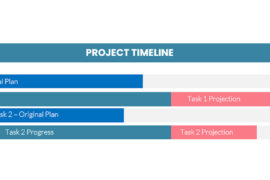 I’ve written at different times in this column about the impact of the web on enterprise project management systems. Until now, most of that talk has been about how the availability of a web interface would attract additional users through an easier and more accessible interface.
I’ve written at different times in this column about the impact of the web on enterprise project management systems. Until now, most of that talk has been about how the availability of a web interface would attract additional users through an easier and more accessible interface.
There is an emerging movement in this regard however, which is starting to revolutionize how we think of project management data and project systems usage. It has come about as the result of web-development from the original static html pages to a content-management paradigm where the design of the system is kept independent of the data that now usually resides in one or several databases. In these types of systems, non-technical personnel can keep a web site full of current content and can provide a dynamic system in which many users can contribute. This has led to a huge market called the enterprise portal web market that in and of itself is hot news.
When we apply this concept to project management, however, we find a great match of functionality to requirement. Many project management tools have now extended their original web interface concept to provide a project management portal type of structure. What this means in practical terms is that a project manager can provide a sort of mini-website specific to the project management office and even to specific project teams as a natural extension of information sharing. Functionality expected in a project portal starts with an ability to add URL links to the menu structure. This means you can immediately extend your web interface from basic schedule management to anything else you have a link for. Additionally, document management is a common function and this means you have a stable centralized place to store all project management related documents that can be made easily accessible to all team members. This alone can produce tremendous improvements in efficiency.
We’ve seen a coming together of several tools from different vendors. Welcom has its WelcomHome, a dedicated project portal product. Primavera’s recent acquisition of Evolve promises additional portal functionality from the existing web-based functionality itself.
It is Microsoft, however, which holds a fascinating position. In its most recent incarnation, Microsoft Project includes technology from its Sharepoint Team Services product. Sharepoint is itself a portal product. Microsoft Office Sharepoint Server (MOSS), the big brother to SharePoint Team Services tackles the large enterprise portal market.
With Microsoft publishing products in both the enterprise project management and portal arenas, there is no doubt that there is huge potential here for a powerful environment.
With Microsoft Project and Microsoft Server rooted firmly in the architecture of SharePoint, even more functionality looks like it will be heading down this route.
In the Microsoft environment, we’ve got the potential to start leveraging all data whether that is lists oriented, document oriented, data oriented or project schedule oriented. This gives Microsoft the potential to take a serious advantage in merging these technologies to provide a significant efficiency advantage. Microsoft Enterprise Server 2003 in particular looks like it will include much of this portal technology by default.
Aside from Microsoft, there’s no doubt that many pm software vendors will be looking to adopt portal functionality as part of their offering in the near future.
This movement towards centralizing access to data in a user-friendly interface rather than trying to integrate all the data together into one system will likely alter how project management environments are created.




